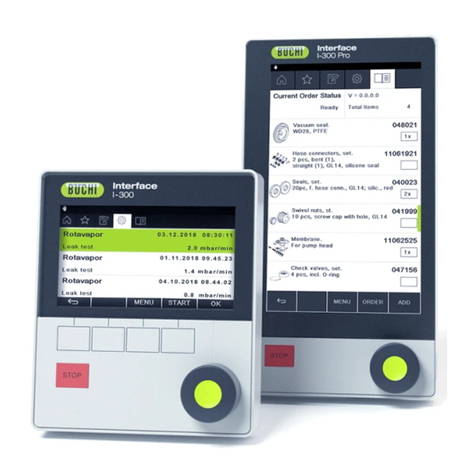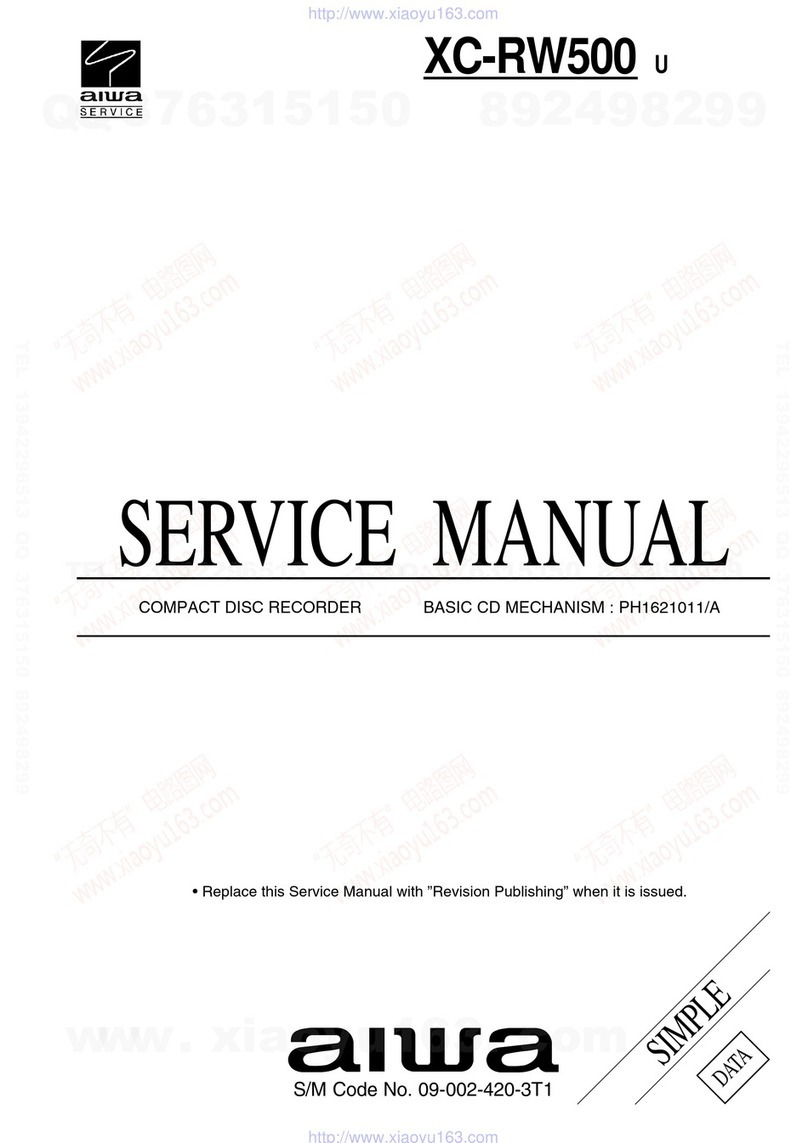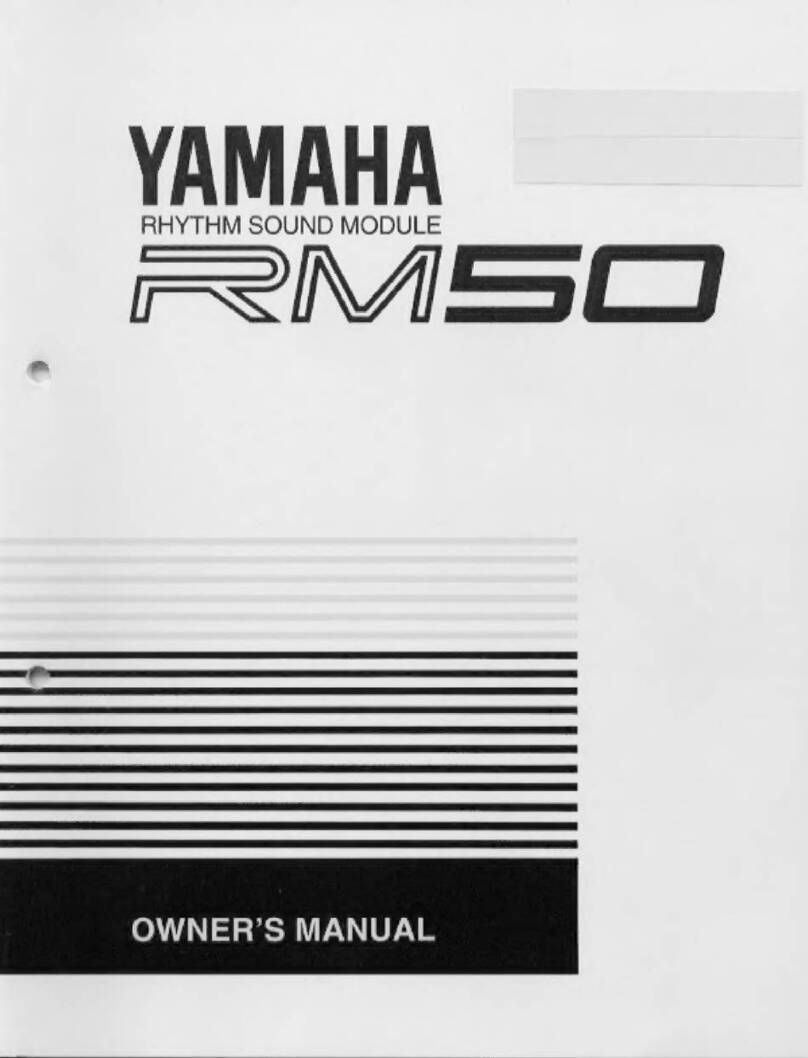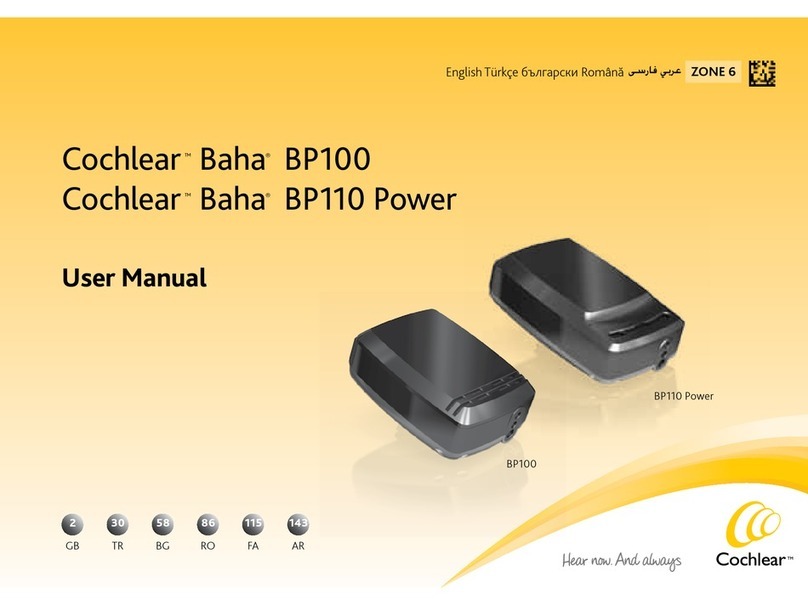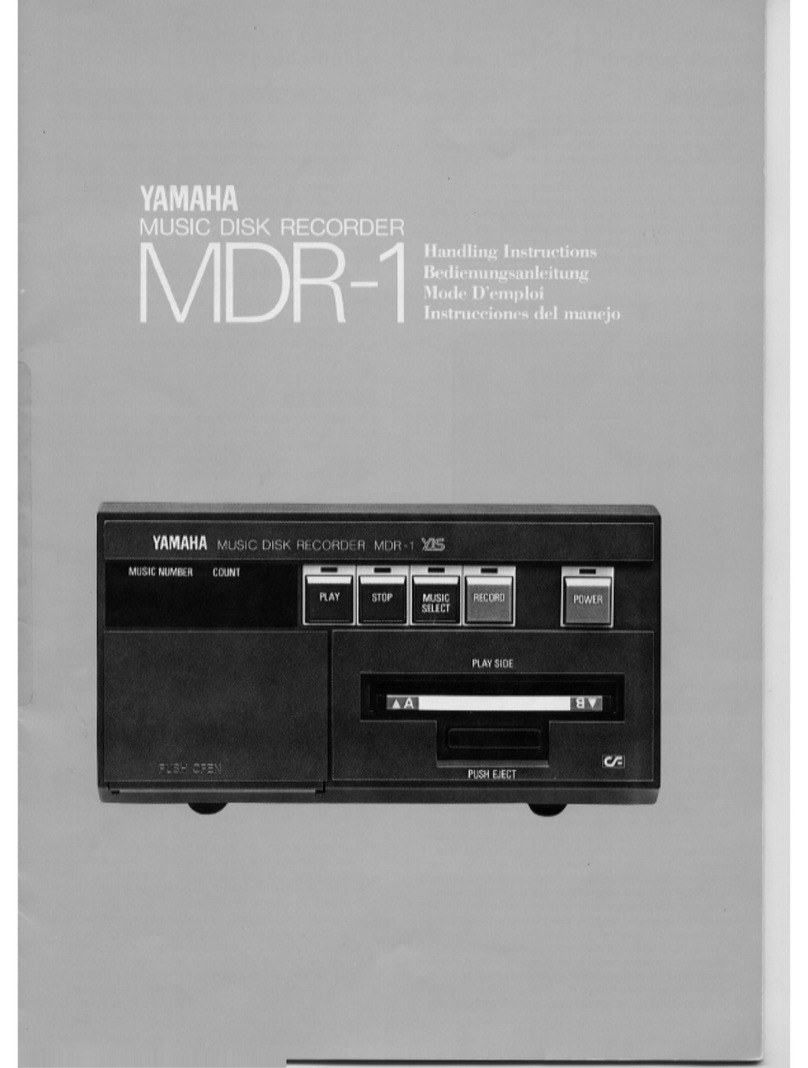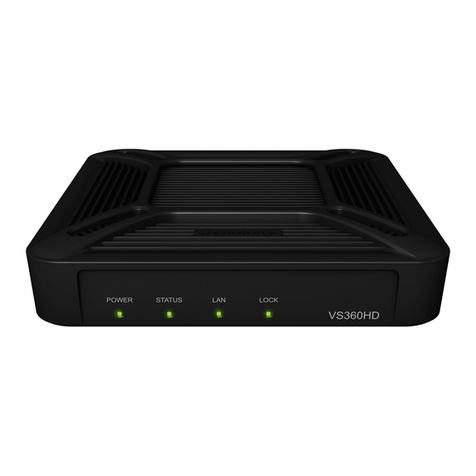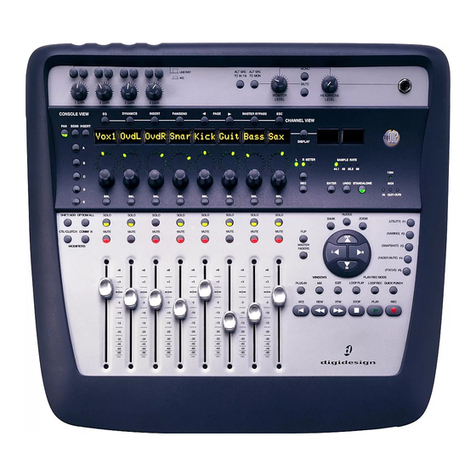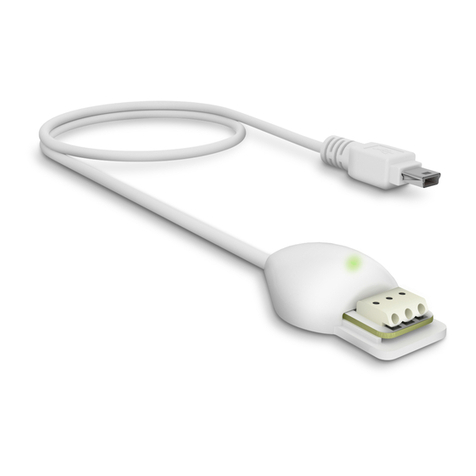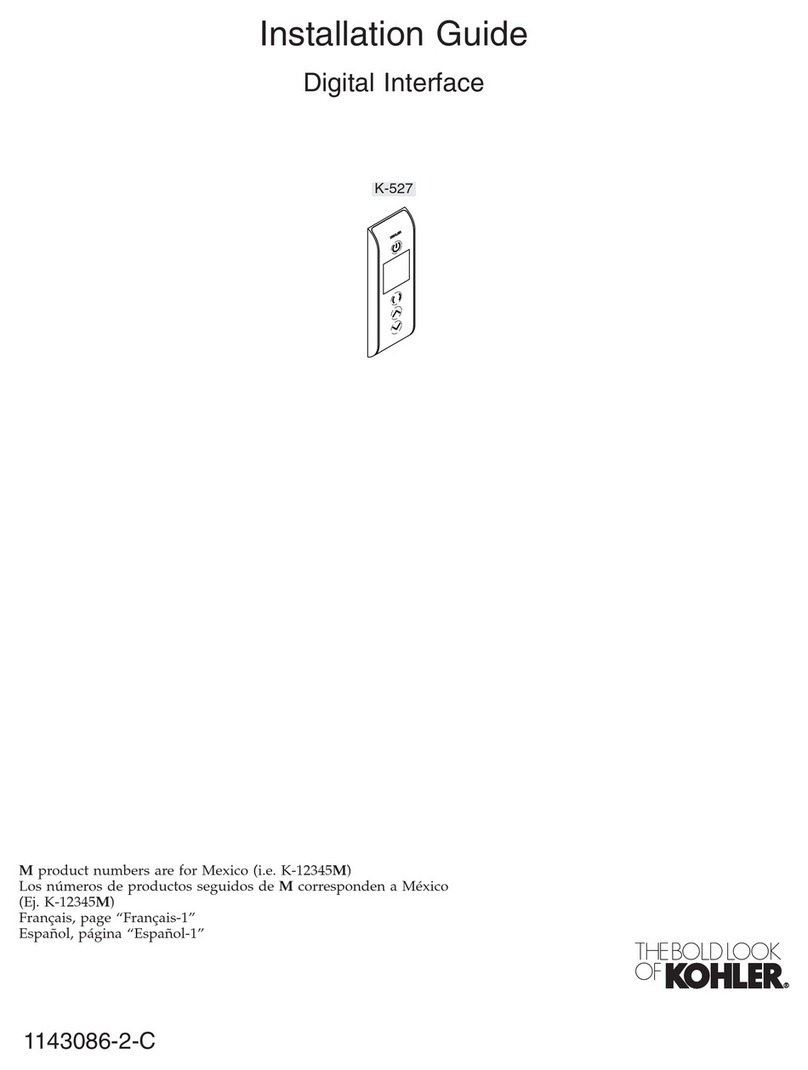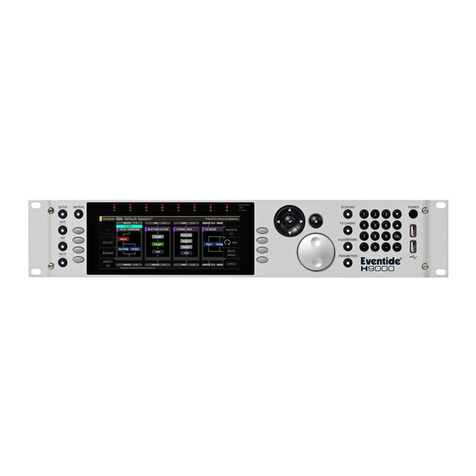Buchi Interface I-300 PRO User manual

Interface I-300
Operation Manual
STOP
11593772D en

Imprint
Product Identification:
Operation Manual (Original) Interface I-300
11593772
Publication date: 06.2017
BÜCHI Labortechnik AG
Meierseggstrasse 40
Postfach
CH-9230 Flawil 1
E-Mail: [email protected]
BUCHI reserves the right to make changes to the manual as deemed necessary in the light of experi-
ence, especially with respect to structure, illustrations and technical detail.
This manual is copyrighted. Information from it may not be reproduced, distributed, or used for competi-
tive purposes, nor made available to third parties. The manufacture of any component with the aid of this
manual without prior written agreement is also prohibited.

BÜCHI Labortechnik AG Contents
Operation Manual Interface I-300 iii
Contents
1 About this document...........................................................................................................6
1.1 Warning notices in this document........................................................................................................ 6
1.2 Symbols............................................................................................................................................... 6
1.2.1 Warning symbols .....................................................................................................................6
1.2.2 Mandatory directive symbols ...................................................................................................7
1.2.3 Other symbols..........................................................................................................................7
1.3 Available languages............................................................................................................................. 7
1.4 Trademarks.......................................................................................................................................... 7
2 Safety....................................................................................................................................8
2.1 Intended use........................................................................................................................................ 8
2.2 Use other than that intended ............................................................................................................... 8
2.3 Staff qualification ................................................................................................................................. 8
2.4 Residual risks ...................................................................................................................................... 9
2.4.1 Faults during operation ............................................................................................................9
2.5 Personal protective equipment ............................................................................................................ 9
2.6 Modifications........................................................................................................................................ 9
3 Product description...........................................................................................................10
3.1 Description of function ....................................................................................................................... 10
3.2 Configuration ..................................................................................................................................... 10
3.2.1 Front view ..............................................................................................................................10
3.2.2 Rear view ...............................................................................................................................11
3.2.3 VacuBox (connections).......................................................................................................... 12
3.2.4 LegacyBox (connections)....................................................................................................... 13
3.2.5 Display (touch-screen) ...........................................................................................................15
3.2.6 Type plate ..............................................................................................................................16
3.3 Navigating through the menu system ................................................................................................ 17
3.3.1 Main menu .............................................................................................................................17
3.3.2 Operating modes ...................................................................................................................18
3.3.3 Configuration..........................................................................................................................20
3.3.4 Libraries .................................................................................................................................23
3.4 Specifications supplied ...................................................................................................................... 24
3.4.1 Interface I-300........................................................................................................................24
3.4.2 VacuBox.................................................................................................................................24
3.4.3 LegacyBox .............................................................................................................................24
3.5 Technical data ................................................................................................................................... 25
3.5.1 Interface I-300........................................................................................................................25
3.5.2 VacuBox.................................................................................................................................25
3.5.3 LegacyBox .............................................................................................................................26
3.5.4 Ambient conditions.................................................................................................................26
3.5.5 Materials ................................................................................................................................26
4 Transport and storage ......................................................................................................27
4.1 Transport ........................................................................................................................................... 27
4.2 Storage .............................................................................................................................................. 27

Contents BÜCHI Labortechnik AG
iv Operation Manual Interface I-300
5 Installation..........................................................................................................................28
5.1 Fitting the Interface I-300/I-300 Pro................................................................................................... 28
5.1.1 Mounting interface on Rotavapor R-300................................................................................ 28
5.1.2 Fitting interface unit on Vacuum Pump V-300 .......................................................................30
5.1.3 Mounting interface unit on laboratory stand (optional accessory).......................................... 31
5.1.4 Mounting interface unit on a wall bracket (optional accessory) .............................................32
5.2 Assembling the BUCHI distillation system......................................................................................... 33
5.2.1 Connecting communication cables to interface unit............................................................... 33
5.2.2 Overview: setting up communication connections................................................................. 34
5.2.3 Overview: setting up coolant tubing connections...................................................................35
5.2.4 Overview: setting up vacuum tubing connections..................................................................36
5.3 Connecting AutoDest sensor to vapor temperature sensor (optional accessory).............................. 37
5.4 Connecting foam sensor (optional accessory)................................................................................... 39
5.5 Connecting valve unit for external vacuum........................................................................................ 40
5.6 Operating I-300 and I-300 Pro in parallel........................................................................................... 40
6 Operation............................................................................................................................41
6.1 Navigating the menu.......................................................................................................................... 41
6.1.1 Selecting menu items............................................................................................................. 41
6.1.2 Entering parameter settings...................................................................................................42
6.1.3 Changing settings ..................................................................................................................42
6.2 Performing distillation ........................................................................................................................ 44
6.2.1 Overview: typical distillation sequence ..................................................................................45
6.2.2 Basic functions.......................................................................................................................46
6.2.3 Performing manual distillation................................................................................................47
6.2.4 Performing timer-controlled distillation...................................................................................50
6.2.5 Drying the system after distillation ("Continuous pumping") ..................................................53
6.2.6 Performing automatic distillation............................................................................................ 57
6.2.7 Drying the product..................................................................................................................59
6.3 Using the solvent library .................................................................................................................... 62
6.4 Activating eco mode .......................................................................................................................... 64
6.5 Setting hysteresis .............................................................................................................................. 65
6.6 Creating favorites............................................................................................................................... 66
7 Mobile connection .............................................................................................................67
7.1 Setting up BUCHI Connect Solution.................................................................................................. 67
7.2 Components of the BUCHI Connect Solution.................................................................................... 68
7.3 Requirements for local network settings............................................................................................ 68
7.4 Connecting interface unit to the LAN................................................................................................. 69
7.5 Handling data..................................................................................................................................... 69
7.6 Enabling interface unit for access to BUCHI Cloud ........................................................................... 71
7.7 Assigning IP addresses ..................................................................................................................... 72
7.8 Downloading and installing the BUCHI Rotavapor app ..................................................................... 72
7.9 Viewing the QR code......................................................................................................................... 72
7.10 Generating a password...................................................................................................................... 74
7.11 Connecting to the distillation system with the BUCHI Rotavapor app ............................................... 74
7.12 Scanning the QR code with your smartphone ................................................................................... 75
7.13 Activating push notifications .............................................................................................................. 76
7.14 Remotely retrieving process data ...................................................................................................... 77
7.15 Optional function: setting up a local server........................................................................................ 79

BÜCHI Labortechnik AG Contents
Operation Manual Interface I-300 v
8 Cleaning and servicing .....................................................................................................80
8.1 Cleaning the casing/display............................................................................................................... 80
8.2 Performing a leak test........................................................................................................................ 80
8.3 Fitting GL14 cap nut with tube seal ................................................................................................... 81
8.4 Checking seals .................................................................................................................................. 82
8.5 Calibrating AutoDest sensor.............................................................................................................. 83
8.6 Calibrating the pressure sensor......................................................................................................... 83
8.6.1 Offset calibration.................................................................................................................... 84
8.6.2 Simple calibration................................................................................................................... 84
8.6.3 Loading factory calibration..................................................................................................... 85
9 Help with faults ..................................................................................................................86
9.1 Faults, possible causes and remedies............................................................................................... 86
9.2 Error messages ................................................................................................................................. 87
9.3 Customer service............................................................................................................................... 87
10 Taking out of service and disposal..................................................................................88
10.1 Taking out of service.......................................................................................................................... 88
10.2 Disposal ............................................................................................................................................ 88
11 Appendix ............................................................................................................................89
11.1 Solvent table...................................................................................................................................... 89
11.2 Spare parts and accessories ............................................................................................................. 91
11.2.1 Accessories............................................................................................................................91
11.2.2 Wear parts .............................................................................................................................92
11.2.3 Spare parts ............................................................................................................................93
11.3 Health and safety approval................................................................................................................ 94
11.4 Health and safety............................................................................................................................... 95

1 | About this document BÜCHI Labortechnik AG
6/96 Operation Manual Interface I-300
1 About this document
These operating instructions describe the Interface I-300 at the time supplied. They
are an integral part of the product and contain important information that is necessary
for safe operation and maintenance.
These operating instructions apply to all variants of the Interface I-300 and are
intended primarily for laboratory staff.
uTo ensure safe and trouble-free operation, read these operating instructions
before starting up the device and follow the guidance they contain.
uKeep the operating instructions somewhere near to the device.
uPass on the operating instructions to any subsequent owner or user.
BÜCHI Labortechnik AG accepts no liability whatsoever for any faults or damage that
result from the failure to follow these operating instructions.
uIf you still have any questions after reading these operating instructions, please
contact BÜCHI Labortechnik AG Customer Service. Contact details for your local
agents can be found on the Internet at http://www.buchi.com.
1.1 Warning notices in this document
Warning notices warn you of dangers that can occur when handling the device. There
are four danger levels, each identifiable by the signal word used.
Signal word Meaning
DANGER Indicates a danger with a high level of risk which could result in
death or serious injury if not prevented.
WARNING Indicates a danger with a medium level of risk which could result in
death or serious injury if not prevented.
CAUTION Indicates a danger with a low level of risk which could result in
minor or medium-severity injury if not prevented.
IMPORTANT Indicates a danger that could result in damage to property.
1.2 Symbols
The following symbols may be displayed in this instruction manual or on the device:
1.2.1 Warning symbols
Symbol Meaning Symbol Meaning
General warning Corrosive substance
Dangerous electrical voltage Flammable substance
Biological hazard Potentially explosive atmos-
phere
Breakable items Dangerous gases

BÜCHI Labortechnik AG About this document | 1
Operation Manual Interface I-300 7/96
Symbol Meaning Symbol Meaning
Hot surface Health-harming or irritant
substances
Risk of hand injury Strong magnetism
1.2.2 Mandatory directive symbols
Symbol Meaning Symbol Meaning
Wear safety goggles Wear protective clothing
Wear protective gloves Heavy load, do not lift with-
out assistance
1.2.3 Other symbols
NOTE
This symbol draws attention to useful and important information.
RThis character draws attention to a requirement that must be met before the
instructions below are carried out.
uThis character indicates an instruction that must be carried out by the user.
5This character indicates the result of a correctly carried out instruction.
1.3 Available languages
These operating instructions were originally produced in German and have been
translated into several other languages. The translations are available on the
enclosed CD or can be obtained as a PDF file via http://www.buchi.com.
1.4 Trademarks
Product names and registered or unregistered trademarks that are used in this
instruction manual are used only for identification and remain the property of the
owner in each case.
For example, Rotavapor® is a registered trademark of BÜCHI Labortechnik AG.

2 | Safety BÜCHI Labortechnik AG
8/96 Operation Manual Interface I-300
2 Safety
2.1 Intended use
The Interface I-300 is intended for indicating vacuum within an operating range of
0mbar to ambient atmospheric pressure. The measurement and regulation of the
vacuum is performed by means of a VacuBox. The Interface I-300 has been designed
and built as an item of laboratory equipment and can be used in conjunction with the
following devices:
Distillation apparatus, especially rotary evaporators
Vacuum-drying cabinets
Vacuum pumps
Recirculating chiller
2.2 Use other than that intended
Use of any kind other than that described in the section Chapter2.1 "Intended use",
page8 and any application that does not comply with the technical specifications
(see Chapter3.5 "Technical data", page25) constitutes use other than that in-
tended.
In particular, the following applications are not permissible:
Use of the device in areas that require apparatus that is safe to use in potentially
explosive atmospheres.
Use as a calibration device for other equipment.
Operation at pressures above atmospheric
Damage or hazards attributable to use of the product other than as intended are
entirely at the risk of the user alone.
2.3 Staff qualification
Unqualified persons are unable to identify risks and are therefore exposed to greater
dangers.
The device may only be operated by suitably qualified laboratory staff.
These operating instructions are aimed at the following target groups:
Users
Users are persons that meet the following criteria:
They have been instructed in the use of the device.
They are familiar with the contents of these operating instructions and the
applicable safety regulations and apply them.
They are able on the basis of their training or professional experience to assess
the risks associated with the use of the device.

BÜCHI Labortechnik AG Safety | 2
Operation Manual Interface I-300 9/96
Operator
The operator (generally the laboratory manager) is responsible for the following
aspects:
The device must be correctly installed, commissioned, operated and serviced.
Only suitably qualified staff may be assigned the task of performing the operations
described in these operating instructions.
The staff must comply with the locally applicable requirements and regulations for
safe and hazard-conscious working practices.
Safety-related incidents that occur while using the device should be reported to the
manufacturer ([email protected]).
BUCHI service technicians
Service technicians authorized by BUCHI have attended special training courses and
are authorized by BÜCHI Labortechnik AG to carry out special servicing and repair
measures.
2.4 Residual risks
The device has been developed and manufactured using the latest technological
advances. Nevertheless, risks to persons, property or the environment can arise if the
device is used incorrectly.
Appropriate warnings in this manual serve to alert the user to these residual dangers.
2.4.1 Faults during operation
If a device is damaged, sharp edges, moving parts or exposed electrical wires can
cause injuries.
uRegularly check device for visible damage.
uIf faults occur, switch off the device immediately, unplug the power cord and
inform the operator.
uDo not continue to use devices that are damaged.
2.5 Personal protective equipment
Depending on the application, hazards due to heat and/or corrosive chemicals may
arise.
uAlways wear appropriate personal protective equipment such as safety goggles,
protective clothing and gloves.
uMake sure that the personal protective equipment meets the requirements of the
safety data sheets for all chemicals used.
2.6 Modifications
Unauthorized modifications may impair safety and lead to accidents.
uUse only genuine BUCHI accessories, spare parts and consumables.
uTechnical modifications to the device or accessories should only be carried out
with the prior written approval of BÜCHI Labortechnik AG and only by authorized
BUCHI technicians.
BUCHI accepts no liability whatsoever for damage arising as a result of unauthorized
modifications.

3 | Product description BÜCHI Labortechnik AG
10/96 Operation Manual Interface I-300
3 Product description
3.1 Description of function
The Interface I-300 is designed for indicating, adjusting and controlling the complete
distillation system. The Interface I-300 settings enable precise specification of the
individual process parameters.For example:
Rotation speed of the evaporating flask
Specified temperature of the heating bath
Specified temperature of the coolant
Specified vacuum pressure
Duration of the distillation process
The pressure is measured and regulated by the associated VacuBox. Measurement
is independent of the solvent used.
3.2 Configuration
3.2.1 Front view
STOP
1
3
2
4
Fig.1: Front view of Interface I-300
1 Display 3 Navigation control
2 STOP button (emergency stop) 4 Function buttons

BÜCHI Labortechnik AG Product description | 3
Operation Manual Interface I-300 11/96
3.2.2 Rear view
3
4
1
2
Fig.2: Rear view of Interface I-300
1 LAN port 3 Locating lug for bracket
2 Standard BUCHI communication port
(COM)
4 MicroSD card (not used)

3 | Product description BÜCHI Labortechnik AG
12/96 Operation Manual Interface I-300
3.2.3 VacuBox (connections)
Other BUCHI laboratory equipment is connected to the Interface I-300 in series
together with the VacuBox. The individual devices are connected to one another via
the standard BUCHI communication port (7). See Chapter5.2.2 "Overview: setting up
communication connections", page34.
1
1
3
4
5
6
7
1
2
Fig.3: Connections on the VacuBox
1 Vacuum connection 5 Connection for vapor temperature/
AutoDest sensor (VT/AS)
2 Venting valve/inert gas connection
(optional)
6 Foam sensor connection (FS)
3 Water coolant valve connection (CW) 7 Standard BUCHI communication port
(COM)
4 Connection for valve unit or straight-
way valve (VALVE)
NOTE
Connecting VacuBox with R-220 Pro:
If the Interface I-300 Pro and the VacuBox are operated in the Rotavapor R-220 Pro
system, the following points should be noted: The external valves must always be
connected to the Rotavapor R-220 Pro even if there is an alternative connection on
the VacuBox.

BÜCHI Labortechnik AG Product description | 3
Operation Manual Interface I-300 13/96
3.2.4 LegacyBox (connections)
Connection of a LegacyBox is required whenever legacy BUCHI laboratory equip-
ment is to be controlled via the Interface I-300. The LegacyBox is connected to the
distillation system using a standard BUCHI communication cable and has other
connection options such as an RS-485 communication port. There is also the option
of incorporating pumps of other makes in the Rotavapor system and controlling them
via the interface. In that case, the pump requires a 0 – 10 V input.
The LegacyBox is fixed to a Rotavapor R-300 or a laboratory stand clamp.
2
4
3
1
6
5
Fig.4: Connections on the LegacyBox
1 Standard BUCHI communication port
(COM)
4 RS-232 (not used)
2 0 – 10 V communication port – for
connecting pumps of other makes
5 External power supply – for genuine
BUCHI mains adaptor, 30 V, 30 W
(see Chapter11.2.1 "Accessories",
page91)
3 RS-485 communication port – for
connecting legacy BUCHI laboratory
equipment (Vacuum Pumps V-700 /
V-710, Rotavapors: R-210 / R-215,
Recirculating Chiller F-1xx)
6 On/Off switch
NOTE
The external power supply is only necessary if the LegacyBox is not connected to a
Rotavapor or a vacuum pump and is used for other vacuum control applications
instead. Otherwise the vacuum pump or the Rotavapor supplies the LegacyBox with
power.
0 – 10 V communication port
This connection comprises a 0 – 10 V output for connecting pumps of other makes
and electrically isolated relay contacts. There is also a valve control contact.

3 | Product description BÜCHI Labortechnik AG
14/96 Operation Manual Interface I-300
Fig.5: 8-pin MiniDin pin assignment, view of socket
Pin
8-pin notation
Symbol Description
1 Ground Ground connection for valve and 10 V
output
2 Valve Vacuum valve connection
3 Spare
4 10 V output 0 – 10 V (max. 20 mA, min. 500 Ohm)
5 Relay In Max. 30 V 2 A, electrically isolated
6 Spare
7 Spare
8 Relay Out Max. 30 V 2 A, electrically isolated
S Shield Shield, connected to ground

BÜCHI Labortechnik AG Product description | 3
Operation Manual Interface I-300 15/96
3.2.5 Display (touch-screen)
1
2
3
4
1
5
6
7
1
1
Fig.6: Display layout
1 Status bar 5 Current setting (e.g. vacuum)
2 Menu bar 6 Scroll bar
3 Current reading (e.g. vacuum) 7 Function activated if navigation
control is pressed
4 Functions of the function buttons
below (context-dependent)

3 | Product description BÜCHI Labortechnik AG
16/96 Operation Manual Interface I-300
3.2.6 Type plate
The type plate is on the rear of the Interface I-300.
BÜCHI Labortechnik AG
CH-9230 Flawil/Switzerland
Type: I-300
SN: 1000000000
Volt: 30 VDC
Frequ.:
Power: 3 W
Built: 2014
Made in Switzerland
3
7
2
1
5
4
6
8
9
1011
9
Fig.7: Type plate (example)
1 Company name and address 7 Year of manufacture
2 Device name 8 Country of manufacture
3 Serial number 9 Approvals
4 Input voltage 10 Symbol for "Do not dispose of as
household waste"
5 Frequency 11 Product code
6 Maximum power rating
NOTE
The VacuBox and the LegacyBox each have their own type plate on the rear.

BÜCHI Labortechnik AG Product description | 3
Operation Manual Interface I-300 17/96
3.3 Navigating through the menu system
3.3.1 Main menu
Highest menu level
Symbol Meaning Sub-items
Home page Process control
parameters
Favorites Bookmarks for fre-
quently used individual
starting points
Operating modes Manual
Timer
Continuous pumping
AutoDest
Drying
Configuration Servicing
Settings
Service
System information
Libraries Solvent library
Consumables

3 | Product description BÜCHI Labortechnik AG
18/96 Operation Manual Interface I-300
3.3.2 Operating modes
Fig.8: "Operating modes" selected on main menu of Interface I-300
The Interface I-300 distinguishes between the following operating modes for a
distillation system:
Operating mode Purpose Consists of
Manual Carrying out distil-
lation with manually
set parameters
User-definable configuration of specified
settings for the individual process
parameters:
Vacuum
Evaporating flask rotation
Heating bath temperature
Coolant temperature
The actual values for the above
parameters are displayed, plus:
Vapor temperature
Timer Carrying out a dis-
tillation process
with manually set
parameters which
is to be stopped af-
ter a set time has
elapsed
User-definable configuration of specified
settings for the timer and individual
process parameters:
See "Manual"
Timer
Continuous
pumping
Drying the system
after distillation
Continuous operation of pump without
option of setting pressure.
AutoDest Carrying out auto-
matic single or
multi-stage distilla-
tion with specified
settings for the vac-
uum continuously
adjusted by the
system
Precondition: AutoDest sensor
connected to the system and supplying
readings:
Coolant inlet temperature
Coolant outlet temperature
Vapor temperature
The algorithm continuously adjusts the
specified settings for the pressure.
Process stops automatically as soon as
distillation is completed.

BÜCHI Labortechnik AG Product description | 3
Operation Manual Interface I-300 19/96
Operating mode Purpose Consists of
Drying Post-drying of con-
tents of evaporating
flask.
Drying of evaporating flask contents.
Evaporating flask rotates in alternating
directions for a defined period of time.
User-definable configuration of specified
settings for the individual process
parameters:
See "Manual"
Timer
Rotation interval

3 | Product description BÜCHI Labortechnik AG
20/96 Operation Manual Interface I-300
3.3.3 Configuration
Fig.9: "Configuration" selected on main menu of Interface I-300
The menu item "Configuration" on the main menu of the Interface I-300 offers the fol-
lowing options:
Servicing
"Servicing" provides access to information on seal servicing and the option of carrying
out a leak test on the distillation system.
Action Option Explanation
Leak test START For carrying out a leak test on the distil-
lation system.
Seal servicing Information Hours of rotation since last service.
Facility for resetting rotation hours
counter.
Settings
The "Settings" submenu provides the facility for changing basic settings on the
distillation system.
Action Option Explanation
Mobile connection
QR code
Display Interface shows QR code for the
connected distillation system, see
Chapter7.9 "Viewing the QR code",
page72.
Mobile connection
password
Display For viewing password and entering on
mobile device (alternative to QR code)
On finish: vent
system
On/Off System is vented after automatic or
manual termination of distillation.
On start: start ro-
tation
On/Off Evaporating flask starts rotating when
distillation is started.
On finish: stop ro-
tation
On/Off Evaporating flask stops rotating after
automatic or manual termination of
distillation.
On start: immerse
flask
On/Off Evaporating flask is automatically
immersed in the heating bath when d
istillation is started.
On finish: lift out
flask
On/Off Evaporating flask is automatically lifted
out of the heating bath after automatic or
manual termination of distillation.
On finish: stop
heating
On/Off Heating of heating bath stops after
automatic or manual termination of d
istillation.
Other manuals for Interface I-300 PRO
1
This manual suits for next models
1
Table of contents
Other Buchi Recording Equipment manuals
Popular Recording Equipment manuals by other brands

GRASS VALLEY
GRASS VALLEY M-Series installation manual
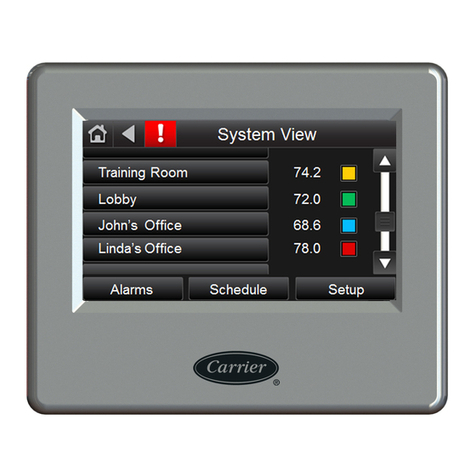
Carrier
Carrier System Touch Installation and setup guide
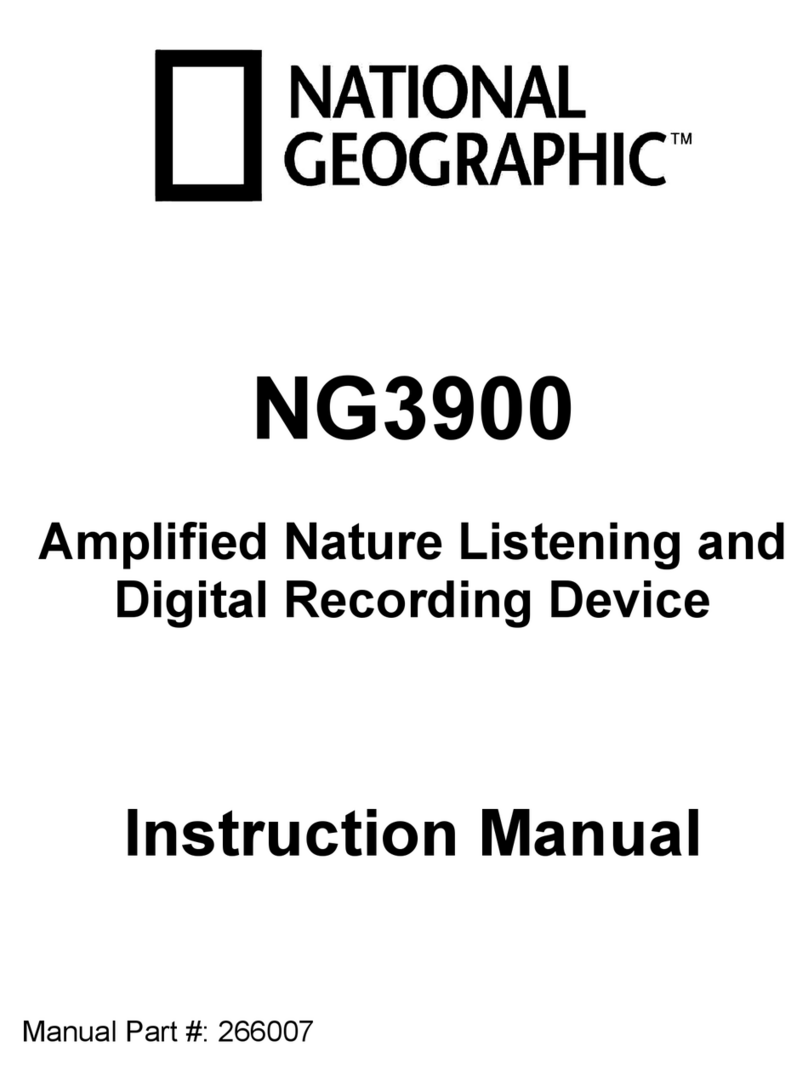
National Geographic
National Geographic NG3900 instruction manual
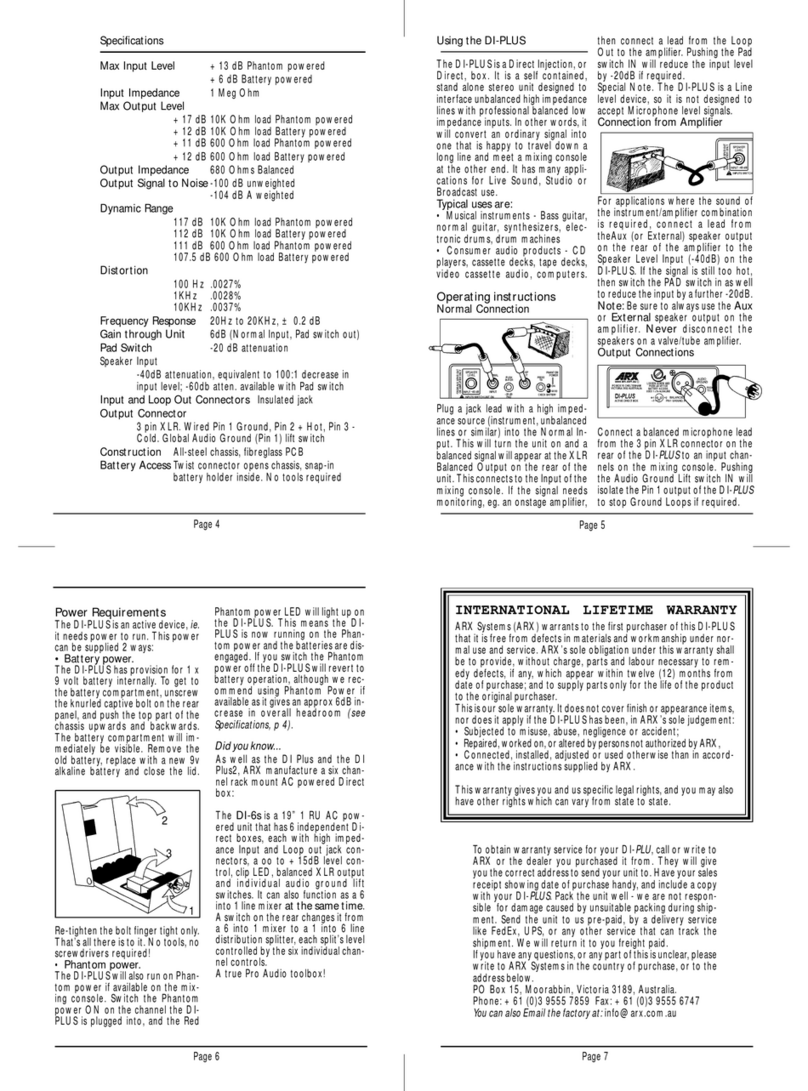
ARX
ARX DI-PLUS owner's manual

Honestech
Honestech Audio Recorder 2.0 Deluxe user guide

Bosch
Bosch Rexroth IMenip instruction manual
